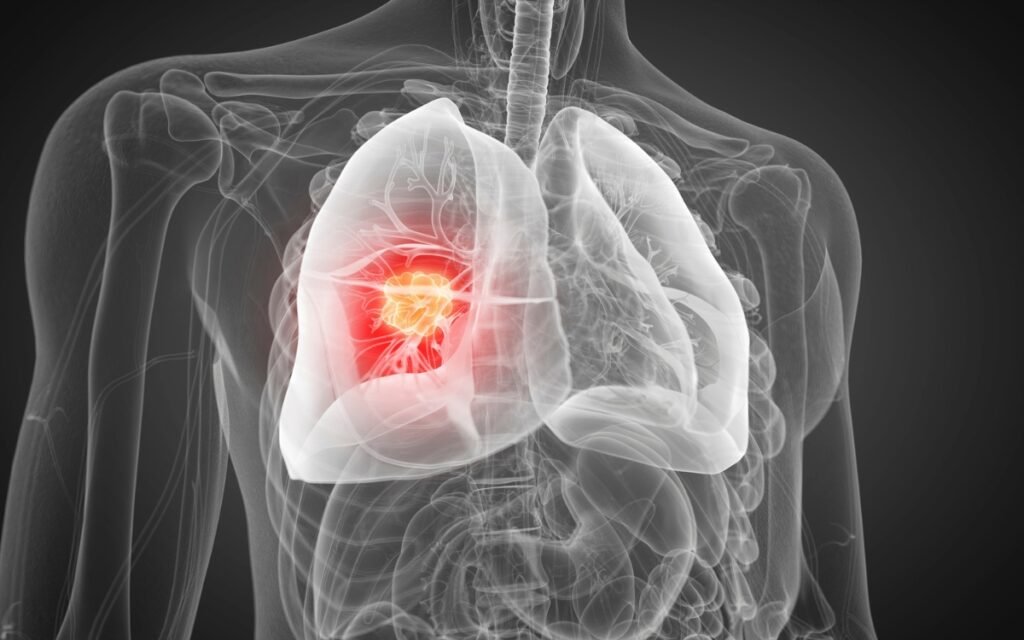ESMO 2023: LBA65
NSCLC with KRAS mutations is a difficult market with few treatment options and many unmet needs. Krazati (adagrasib) is a potent and selective oral inhibitor of KRASG12C and Mirati’s flagship product being tested for multiple indications. KRAS mutations are most common in pancreatic cancer, followed by colorectal cancer and NSCLC. The most common KRAS variant in NSCLC is G12C. Mirati Therapeutics made a splash in the market when they got approval for their KRAS inhibitor Krazati last year.
The drug was approved in December 2022 for adult patients with KRASG12C-mutated locally advanced or metastatic NSCLC who have received at least one systemic therapy. Krazati’s response data is the best so far in G12C in NSCLC, with no black box warning of QTc prolongation. Krazati’s second-line NSCLC label is better than Lumakras. Krazati’s launch coincided with Lumkras’ sequential sales decline. Mirati is now planning to enter the first-line setting in combination with pembrolizumab for patients with PD-L1 TPS ≥50%.
The Phase II/III KRYSTAL-7 trial (NCT04613596) is assessing the safety and effectiveness of Krazati (adagrasib) as a monotherapy and in combination with pembrolizumab in patients with advanced NSCLC whose tumors have a KRAS G12C mutation. In patients with PD-L1 TPS ≥50%, the combination showed an ORR of 63% and a DCR of 84% as of June 2023. The median DOR was not reached and the median PFS was also not reached.
The most common treatment-related adverse events (TRAEs) were nausea and diarrhea (any grade 51% and 44%, respectively). Looking specifically at liver TRAEs, 16% of patients had grade ≥ 3 treatment-related alanine aminotransferase (ALT) and raised aspartate aminotransferase (AST) increase. This is notable because, for Lumakras (sotorasib), 27% to 37% of patients had severe grade ≥ 3 treatment-related ALT/AST increase when the KRAS inhibitor was given in sequence or concurrently with a PD-L1 inhibitor.
These impressive results have motivated Mirati to plan the start of a Phase III trial evaluating the concurrent use of Krazati and pembrolizumab vs. pembrolizumab alone in treatment-naïve KRAS G12C patients. The Phase III KRYSTAL-7 trial plans to begin enrollment at the end of this year.
Krazati is not just a drug, it’s an innovation in cancer treatment. It blocks the KRASG12C mutation and prevents cancer cells from growing and spreading. Krazati is changing the game for NSCLC patients with KRASG12C mutation.
Conclusion
The combination of Krazati and pembrolizumab has demonstrated highly promising results, leading to the initiation of a Phase III trial. While further data is needed to confirm the efficacy of this combination, particularly in patients with low PD-L1 expression, it is expected to make a significant impact on the first-line treatment landscape for advanced NSCLC in the United States by 2027.
Despite its success in the United States, the European journey for Krazati has encountered obstacles, with a recent negative opinion from the Committee for Medicinal Products for Human Use. Mirati’s commitment to supplying Krazati under early access programs in EU Member States reflects their dedication to bringing this therapy to patients in alignment with regional regulations.
One notable advantage of Krazati is its superior safety profile compared to Lumakras, particularly in terms of hepatotoxicity when used in combination with PD-L1 inhibitors. Krazati’s steadier pharmacokinetics and lower hepatotoxicity set it apart from the competition, making it a strong contender in the KRAS-mutated NSCLC market. Bristol Myers Squibb’s acquisition of Mirati for up to USD 5.8 billion marks a significant development in the pharmaceutical landscape, showcasing the increasing importance of oncology in the industry and opening new opportunities for both companies. The future for Krazati in the treatment of KRAS-mutated NSCLC appears promising, with the potential for substantial market success and the advancement of oncology research and therapies.





























